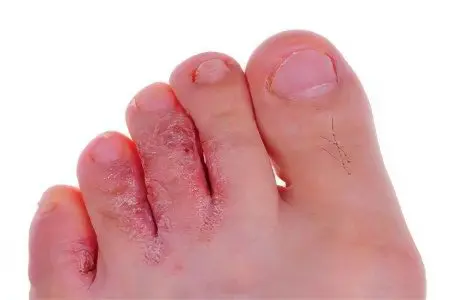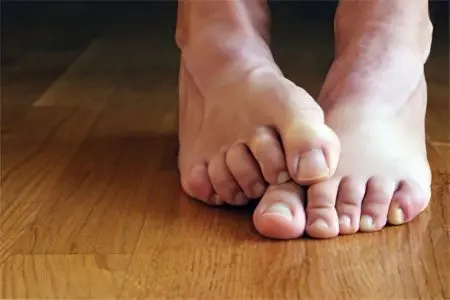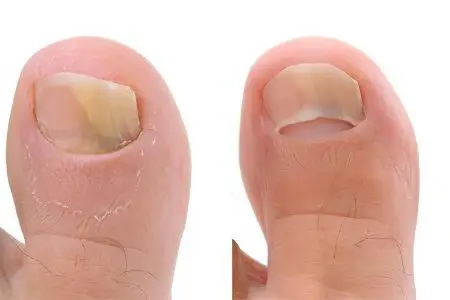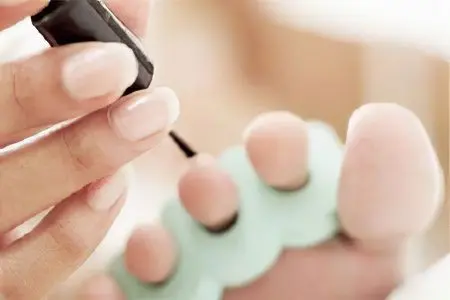Contents
Mycosis This is the general name for diseases that are provoked by parasitic fungi. It is customary to distinguish between fungal infections of the skin and nails (dermatomycosis), hair, mucous membranes and mycosis of internal organs.
The causative agents of infection are filamentous fungi, which are transmitted either by contact with a sick person or by interaction with objects contaminated with fungal spores. Sometimes fungal diseases are provoked by saprophytic microflora, which manifests its pathogenic properties when the body’s immune forces deteriorate. The severity and nature of the course of the disease depends on the mycotic organism with which the person was infected, as well as on the site of the lesion.
It is customary to distinguish three types of superficial mycoses of the skin: ringworm, keratomycosis and candidiasis. Deep fungal infections are opportunistic systemic mycosis and subcutaneous fungal infections such as sporotrichosis, mycetoma and chromoblastomycosis.
It is superficial mycotic infections of the skin that tend to spread everywhere and increase the number of patients. WHO indicates that every 5 inhabitant of the Earth has one or another fungal infection, while the leading position is occupied by the fungus of the feet and large folds.
Symptoms of mycosis

The symptoms of mycosis are varied and depend on the type of pathogen and the part of the body that has been affected.
Since the most common types of mycotic lesions are ringworm, candidiasis and keratomycosis, it is worth dwelling on their clinical manifestations:
Symptoms of dermatomycoses:
With epidermophytosis of the feet, peeling is observed, both pronounced and slight. It is accompanied by severe or mild itching. A rash may appear between the toes and on the sides of the foot, as well as the formation of fluid-filled blisters. In old age and in the presence of concomitant diseases, the addition of a bacterial infection is often observed.
With inguinal epidermophytosis, ring-shaped red rashes appear on the skin in the groin area. Sometimes small bubbles appear in these places, which not only itch, but also hurt. The disease has frequent relapses and affects mainly men.
With ringworm of the scalp, a red, itchy rash appears, which is accompanied by peeling. In parallel, hair may fall out on the affected areas.
With onychomycosis, a gradual deformation of the nail plate occurs with its subsequent atrophy in the absence of treatment. Symptoms are: thickening of the nail, discoloration, delamination, crumbling.
If ringworm affects smooth skin, then a pink or red rash appears on the infected areas. Sometimes the rash merges into spots that have a light area in the center.
Symptoms of keratomycosis:
Multicolored or pityriasis versicolor is accompanied by the appearance of scaly patches of a pinkish-brown hue. The predominant place of localization is the neck, chest, back and shoulders. As they grow, the lesions coalesce. As a result of the inability to pass ultraviolet light, the spots stand out strongly against the background of healthy skin areas.
With actinomycosis, the skin and tissues become infiltrated, dense to the touch. Along the edges of the infiltrate, which tends to grow peripherally, granulation occurs.
With erythrasma, light brown spots are formed mainly on the skin of large folds, which have a darker or lighter shade. The surface of the affected area is smooth, the smallest bran-like scales are visible on it.
Symptoms of candidiasis:
With candidiasis of the skin, patients may develop candidal seizures – affected areas of the skin in the corners of the mouth. A plaque forms on their surface, under which there is hyperemic and eroded skin.
Skin candidiasis can also form in the folds of obese people, or in children if personal hygiene is not followed. The affected areas are red, covered with a white coating on top, possibly peripheral detachment of the epidermis. Superficial mycosis of the mucous membranes, skin, nail folds and nail plates are skin diseases.
Candidiasis of the oral mucosa affects the tongue, the inner surface of the cheeks, gums and palate. At the same time, they turn red, multiple or single white plaques form on the surface of the oral mucosa, which, when merged, form films. The patient experiences burning and pain while eating.
Vulvovaginal candidiasis is characterized by reddening of the mucous membrane of the genitals, the formation of vesicles, which, after opening, leave erosion with a film on top. A woman is concerned about curdled discharge, which increases the sensation of itching.
Candidiasis of the internal organs is a serious disease that, as a rule, occurs against the background of other diseases. The most common candidiasis of the intestines, lungs, urinary organs. Fungal sepsis is not excluded.
As for opportunistic mycoses, they do not affect healthy individuals and occur in patients with severe immunobiological disorders. Such diseases include: blastomycosis, histoplasmosis, paracoccidioidomycosis, cryptococcosis, aspergillosis, mucorosis.
Subcutaneous fungal infections such as sporotrichosis, mycetoma and chromomycosis affect the subcutaneous tissues and the epidermis itself. Characterized by the formation of a painless pustule, papule or nodule that tends to grow rapidly. Subsequently, the formation ulcerates with the involvement of the lymphatic vessels in the process.
Causes of mycosis

Most often, the causes of mycosis are infection with one or another fungal organism. However, the development of the disease is possible as a result of the growth of its own opportunistic flora, which always normally exists in the body, on the skin, in mucous membranes, etc.
The more provocative factors a person is exposed to, the higher the risk of developing a mycotic infection:
Any immunodeficiency state. They can be triggered by HIV infection, taking medications (antibiotics, corticosteroids, cytostatics), inappropriate use of local antiseptics (any ointments, lozenges, sprays, etc.). As a result, the normal microflora is disrupted, which means that the immune response of the skin, mucous membranes, nails and a fungal infection develops.
Endocrine diseases, among which the greatest danger is diabetes mellitus. In addition to the risk of developing the disease, diabetes mellitus increases the risk of complications of mycotic infection. In this regard, it is also dangerous: hypothyroidism, hyperthyroidism, adrenal tumors, obesity, thyroiditis, hypercortisolism.
Hormonal disorders in the body, which can be caused by both illness and age-related changes.
The age of the person. It is known that the risk of developing a fungal infection increases with age and is especially high after 60 years.
Any microtrauma of the mucous membranes, skin. Any wound is the entrance gate for infection, including mycotic nature. In this case, the site of the lesion will depend on the site of injury, for example, injury to the ear with a cotton swab often leads to otomycosis, injury to the nail with manicure accessories to onychomycosis.
The presence of any untreated additional source of infection in the body. These can be carious teeth, chronic tonsillitis, diseases of the gastrointestinal tract, liver, blood, kidneys, lungs, etc. Any disease has a negative effect on the state of the immune system and leads to an increased risk of fungal infection.
Negative influence of environmental factors. These include excessive dust and gas content in the air, occupational hazards (for example, workers in saunas and baths are more at risk of onychomycosis and dermatophytosis of the feet, and asphalt pavers and repairmen – pharyngomycosis), adherence to bad habits, living in climatic zones with high temperature and humidity.
The presence in the family of a person with a fungal infection significantly increases the risk of intrafamilial infection.
Mycosis of the skin of the feet
Mycosis of the skin of the feet is one of the most common diseases of fungal etiology. It is found everywhere. The data provided by various scientists testify in favor of the fact that up to 70% of the world’s population is familiar with this pathology. Speaking of mycosis of the feet, it should be understood that this term in most cases indicates the defeat of the sole of the lower limb and its interdigital spaces by dermatomycete fungi, although the disease can be triggered by mold and yeast-like fungi.
It is customary to distinguish several forms of mycosis of the skin of the feet, including:
Intertriginous (with a primary lesion of the interdigital folds), which is accompanied by burning and itching, as well as cracks and erythema of the areas involved in the pathological process;
Squamous-hyperkeratotic (with the development of erythema on the sole of the foot), which is accompanied by peeling, up to the appearance of deep cracks against the background of mild itching;
Dyshidroticin which the rashes are painful, itchy, prone to merging and blistering, followed by the formation of erosions;
Erasedat which the clinical manifestations of the disease are minimal.
Mycosis of the nails on the legs and hands

Mycotic lesions of the nails on the legs and on the hands affect 30% of people over the age of 40 years. Moreover, the older a person becomes, the higher the risk of developing an infection, and after 70 years, 50% of older people suffer from onychomycosis.
There are three main clinical signs indicating the development of the disease:
Changing the color of the nail plate;
Thickening of the nail plate;
Crumbling and complete destruction of the nail.
Most often, domestic dermatologists in their practice use four forms that characterize the development of the disease: distal-lateral, superficial white, proximal subungual and total dystrophic form of the lesion of the nail plate.
Diagnosis of mycosis
Diagnosis and treatment of fungal infections is the responsibility of dermatologists and mycologists. To make a diagnosis, laboratory tests will be required, the material for which are various substrates. It can be skin flakes, blood, feces, sputum, nails, hair. The resulting material is processed with special reagents and studied under a microscope.
To determine the type of pathogen of mycotic infection, cultural methods are used, for which the inseminated materials are placed in various nutrient media.
To determine some types of dermatomycosis, special devices are used, for example, a Wood’s lamp.
In parallel, the doctor finds out the cause that led to the infection – blood is taken for HIV, for sugar, for the detection of STDs, etc.
Mycosis Treatment
Modern medicine has a full range of effective remedies that can save a person from mycosis. These are preparations of both local and general action. The course of treatment should be selected exclusively by a doctor, based on the individual characteristics of the patient, from the clinical manifestations of the pathology, from the affected area – tissues, organs, mucous membranes, etc.
It is important to consider the following criteria:
The size of the area of the affected area;
The duration of the disease in time;
The nature of the pathological changes caused by the disease;
The presence of comorbidities.
Modern drugs can not only effectively and quickly stop the progression of the disease, but also destroy the mycotic microorganism itself. Drugs tend to accumulate and persist in tissues for a long time. This significantly reduces the therapeutic course.
In addition, pulse therapy is popular, when a full recovery occurs in 4 months (this applies to nail fungus). However, treatment should be complex with the use of local preparations and oral tablets.
Treatment of mycosis with a laser
You can get rid of mycosis of the nails with the help of laser therapy. The essence of the procedure is that the infrared radiation of the laser penetrates deep into the nail plate and heats the mushroom spores. The penetration depth of the beam is 7 mm, it is at this distance that mycotic spores lie.
As for the duration of exposure, it depends on the number of affected nail plates and on the type of apparatus used for treatment. The break between procedures should be from one week to 30 days, the number of treatments can vary from 3 to 10. As a rule, the effect of such therapy can be seen from the first time, however, treatment should continue until the diseased nail plate completely disappears .
This painless and short procedure contributes to the destruction of nail fungus and pathogenic bacteria. There is no need for a rehabilitation period, and the laser treatment procedure does not give side effects. However, the risk of recurrence of the disease is not excluded, therefore it is advisable to combine the use of laser therapy and drug treatment. As an independent method, laser treatment is prescribed only if there are serious contraindications to systemic or local therapy.
Antifungal nail polish

When the mycotic lesion was diagnosed in time and did not cause serious complications or deformities, local therapy can be used to treat the disease. In this case, the doctor may recommend applying a varnish or solution that has antifungal activity to the nail.
It can be:
Serum for nails Mikozan in a set with which there are nail files for removing a damaged nail. The price of such a drug varies from 530 to 600 rubles.
Varnish Batrafen, which can cost up to 1600 rubles. This varnish must be applied according to the correct scheme: the first 30 days – after 1 day, the next 30 days – 2 times in 7 days, the third 30 days – 1 time in 7 days. Batrafen is applied once a week until the diseased nail is completely gone.
Varnish Lotseril, contributing to the destruction of the cell membrane of the mycotic microorganism. The course of therapy can vary from six months to a year. In this case, the remedy must be applied to the diseased nail at least 2 times in 7 days. The price of Loceryl can reach 2200 rubles.
Lac Oflomil, the cost of which is 800 rubles.
Varnish Cyclopyroxolamine at a price of up to 1400 rubles.
Therapy with the use of varnishes cannot be short-term and does not allow a break in treatment. To improve the aesthetic appearance of nails, nail polish can be applied over the antimycotic varnish.
Means for removing a nail affected by mycosis
On sale there are tools that allow you to painlessly get rid of the nail plate affected by fungal microorganisms. For example, the drug Nogtevit. With it, you can avoid surgical removal of the nail. The price of Nogtevit is low and averages 120 rubles.
As part of the product, you can find propylene glycol, stearic acid, triethanolamine, urea and tea tree oil. Thanks to these components, it is possible to remove the damaged nail, prevent infection and grow a healthy nail plate.
Before applying Nail Vit, the nails should be thoroughly steamed in water with soda. For 1 liter of liquid, one teaspoon of soda and liquid soap is sufficient. After that, the legs are dried and the place around the nail is fixed with adhesive tape. Nogtevit is applied to the nail plate itself, while it is important to ensure that healthy tissue is not captured. After applying the plaster, both the nail itself and the phalanx of the finger are closed. After 4 days, the patch is removed, the nail is steamed again and removed using pedicure supplies. If it was not possible to completely scrape off the stratum corneum, then the procedure must be performed again.
You can also use the drug Nogtizimin, which is similar in effectiveness. Its average price is 120 rubles.
Antifungal pills
When the course of the disease is rapid, as well as in the advanced form of the disease, therapy with systemic antimycotic drugs should be carried out. The choice of tablets is quite wide, only a doctor can choose the optimal drug.
The most popular antimycotic drugs for oral administration are:
Active substance | Most popular oral remedy | Analogues |
Fluconazole | Fluconazole (up to 40 rubles) |
|
Itraconazole | Orungal, the minimum price for which is 2500 rubles. |
|
Ketoconazole | Nizoral and Fungavis at a price of 450 and 140 rubles, respectively. | — |
Terbinafine | Lamisil at a minimum price of 1700 rubles. |
|
Topical treatment with cream, spray, ointment
Active substance | Cream/Ointment | Spray | Solution |
Naphthyfin | Exoderil (from 350 rubles) | ||
Certoconazole | Zalain (from 310 rubles) | ||
Oxyconazole | Mifungar (of 210) | ||
Ketoconazole | Nizoral and Mycozoral (from 300 and from 130 rubles, respectively) | ||
Fundizol | Fundizol (from 100 rubles) | ||
Chlornitrophenol | Nitrofungin (from 250 rubles) | ||
Cyclopyroxolamine | Batrafen and Cyclopyroxolamine (both from 250 rubles) | ||
Terbinafine |
|
| |
Bifonazole | Bifosin and Mykospor (for 30 and 330 rubles, respectively). |
The criterion for effective treatment is the complete replacement of the diseased nail with a healthy one and the disappearance of all symptoms of the disease. However, in order to finally verify the results of therapy, it is necessary to perform laboratory tests. The material is submitted for analysis 14 and 30 days after the completion of the course.
Other funds
Fundizol. The cream is intended for the treatment of nail fungus and skin of the feet. Use the cream twice a day, applying to the nail and fixing with adhesive tape and compress paper. The price of the drug varies within 100 rubles. It contains zinc oxide, salicylic acid, extracts of celandine and oak bark, potassium iodide and other components.
Creolin. A drug that can be purchased at a veterinary store. It helps to eliminate bacteria and fungi from the nail, has a disinfecting effect. During use, make sure that the product does not get on the skin. For this, an adhesive plaster is applied to it. The affected plate is treated 1 time per day until a healthy nail grows. The price of the drug does not exceed 30 rubles.
Fukortsin, or “Liquid Castellani”. It is also an effective remedy for the treatment of fungus, however, care must be taken when applying. May cause burns on contact with skin.
Berezhnov liquid. This solution is made to order in a pharmacy. The recipe has been known to pharmacists since ancient times.
Foot baths with Listerine. To get rid of nail fungus, you can use baths with Listerine mouthwash, lemon juice and apple cider vinegar.









